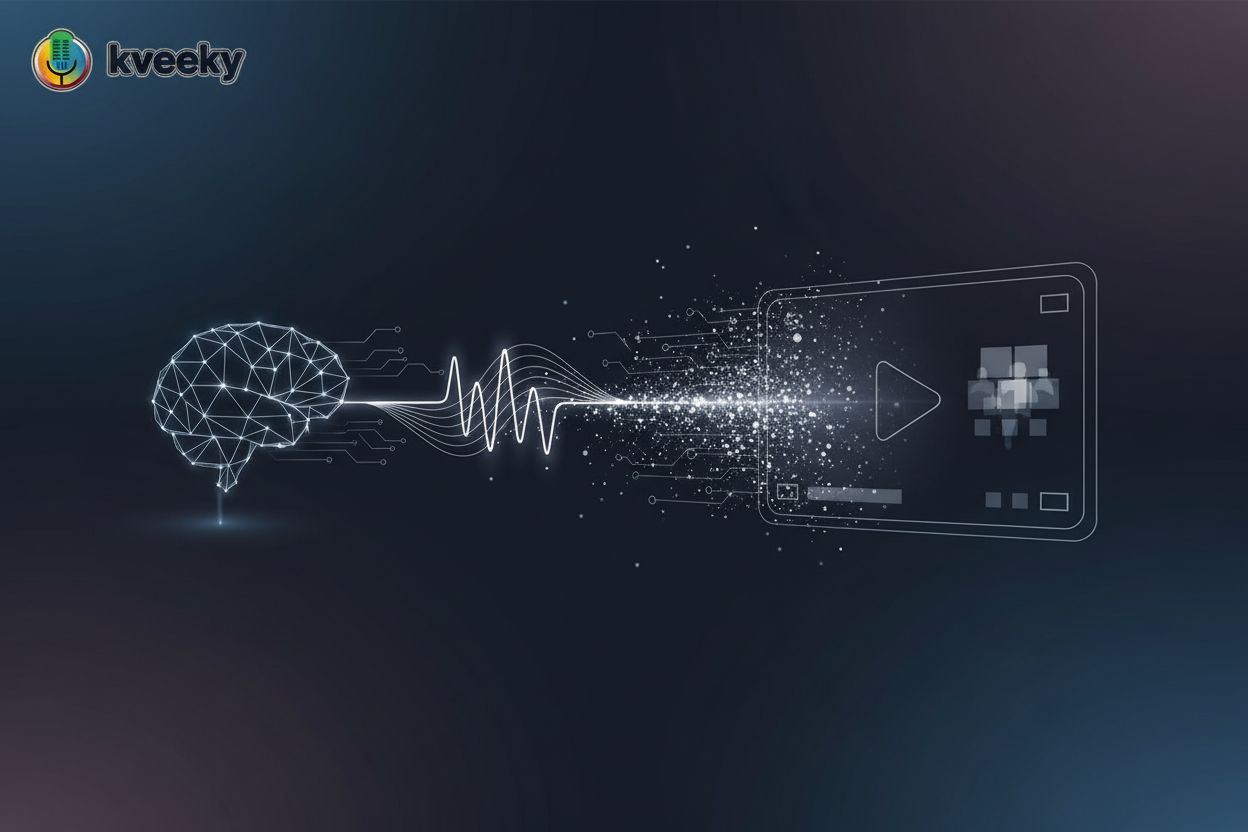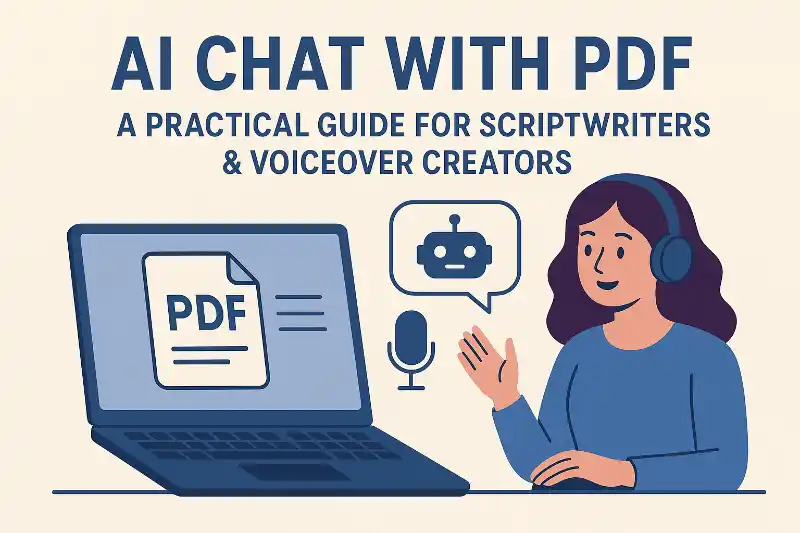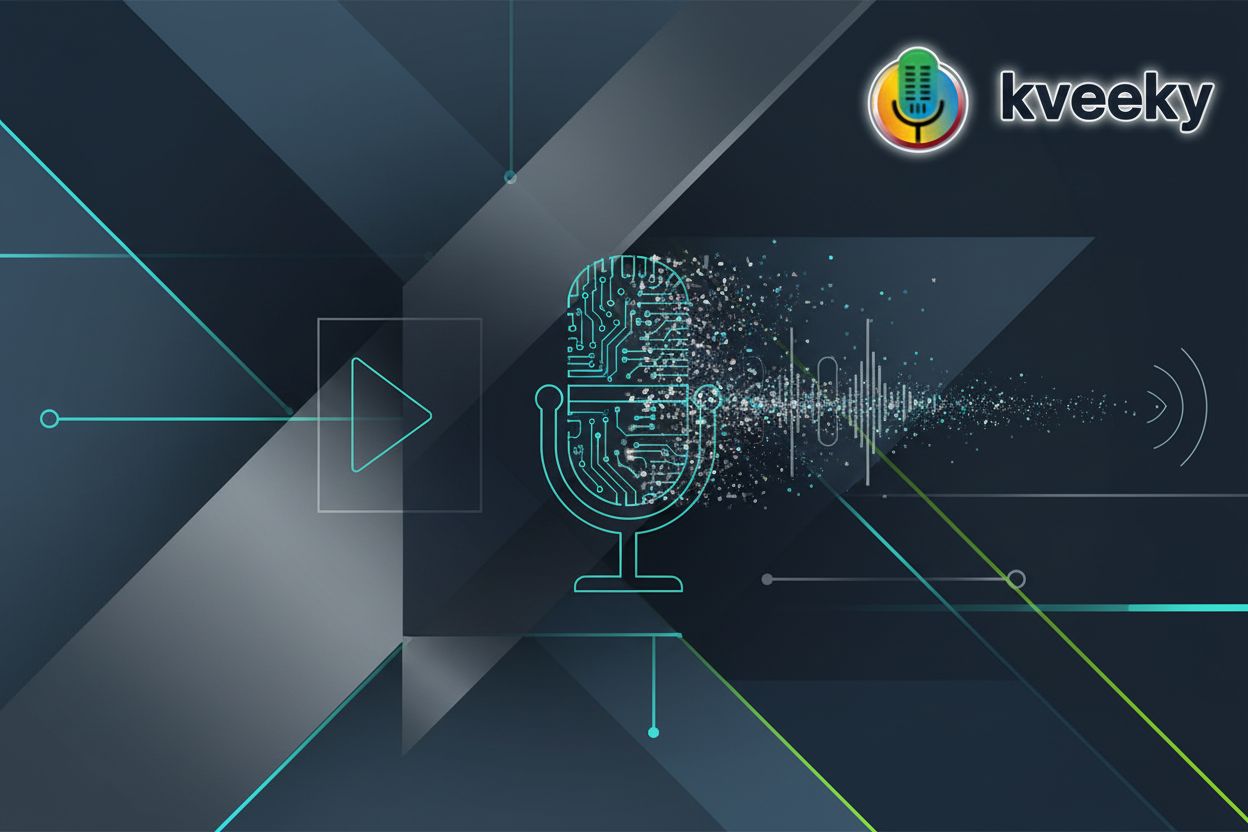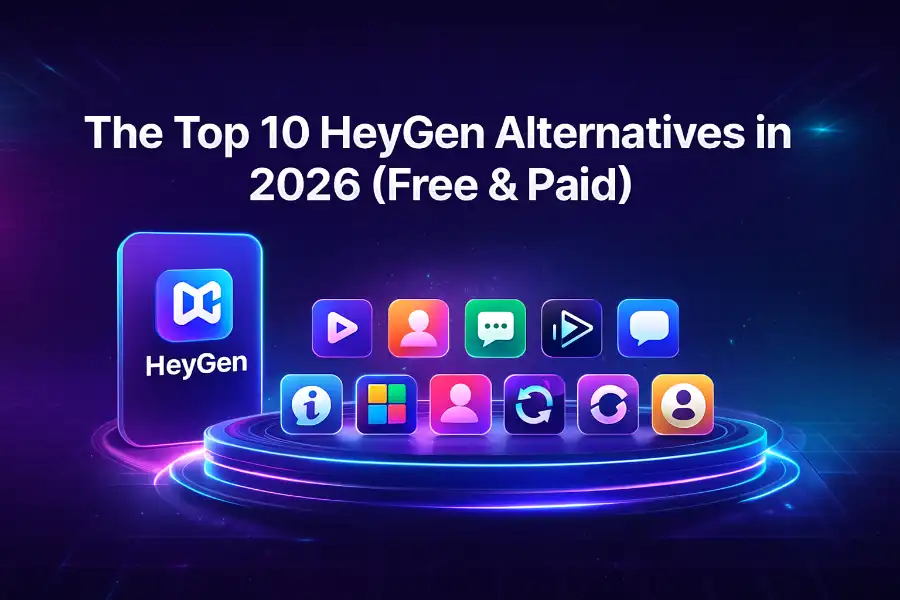Mastering Voice Customization: A Comprehensive Guide for Video Producers
TL;DR
Understanding Voice Customization in Video Production
Making a good video, it's not just about the visuals, right? The voiceover is a huge part of it. But what if you could make that voice totally yours, like, perfectly match your brand?
Traditional voiceovers, they can be a pain. Expensive, take forever, and keeping it the same across all your videos? Tough.
Then came ai voice tech. Cheaper, more scalable, sure. But those early text-to-speech voices? Kinda robotic, no soul.
Voice customization is where it gets interesting. It’s way past generic TTS. It gives you tools to make voices that actually sound like your brand.
Having a consistent voice really makes your brand stick. When people hear that same voice in all your videos, they start to connect it to you.
Custom voices can also make people feel things, you know? Build a real connection. Like, a bank might use a calm, steady voice to seem trustworthy.
Sonic branding – that’s like your brand’s sound, including the voice – it really helps people remember you. Studies show that sonic stuff can boost ad recall by 17% and make people 6% more likely to buy.
Emotion-aware voice synthesis is a big deal now. This tech lets ai voices kinda get the vibe of the video and change how they sound based on that.
Voice cloning lets brands make a digital copy of a real person's voice. Super useful for videos in different languages or making stuff super personal.
Lots of companies are doing this hybrid human-ai thing now. It’s like getting the best of both worlds – real human actors and smart ai tech.
As voice tech keeps getting better, video folks can use it to make videos that are way more engaging and make a bigger splash. So, what are the actual bits you can tweak? Let's dive in.
Key Elements of Voice Customization
Did you know just changing the tone can totally change how people see your video? Making the voice in your video just right is kinda an art, and knowing the different parts is key to actually connecting with people.
Tone and pitch are like the foundation of voice customization. Messing with these can really change how your brand comes off. For example, a lower pitch sounds more in charge, more confident. A higher pitch? Can sound warmer, friendlier. Banks often go for a steady, middle-ground tone to seem stable and reliable.
Matching the tone to your brand's personality is super important. A fun tone might work for, like, a gaming brand, but a serious tone is better for, say, legal services. Think about how you want your brand to feel and adjust the voice to match.
Accent and pronunciation really help you connect with who you're trying to reach. A good accent makes it feel familiar, builds trust. It makes the voice more relatable, more engaging. And clear pronunciation? That means no confusion, people get what you're saying, and it just sounds better.
Getting these bits just right can really nail your brand's identity and message. If you're talking to a certain group of people, using an accent they know can help build rapport. It’s just important that it’s clear and nobody misinterprets anything. You know, even things like voice control on phones let you pick different accents and languages, which shows how much it matters for understanding.
Being able to show emotion is a big deal for good communication. The fancy ai voice systems now can actually pick up on all sorts of emotional stuff. Like, Coca-Cola uses a super upbeat, energetic voice to make you feel excited and happy. Netflix, on the other hand, goes for a more dramatic, cinematic sound.
Matching the voice's emotion to what's happening in the video makes it hit harder. Think about how you want the voice to make your audience feel. Does it fit with what you're trying to say?
The speed and rhythm of talking can also change how your message lands. People listening to audiobooks or podcasts, they often do best at around 150-160 words per minute, with a pretty deliberate pace. This lets listeners actually take it all in.
You gotta match the pace to what you're talking about. A fast pace might be good for a quick ad, but a slower pace is better if you're explaining something in detail. Using pacing well can add emphasis and keep people hooked.
Getting these key parts down means you can create a custom voice that really speaks for your brand. So, what's next? We'll look at voice cloning and what you can do with it.
Top Voice Customization Tools for Video Producers
Ai voice customization is totally changing how video producers make stuff. These tools give you more control than ever over how voices sound, letting you make them perfect for your brand and what you want to say.
There are a bunch of platforms out there with good voice customization features. Here’s a quick look at some of the top ones:
- Speaktor: This one’s great for multilingual text-to-speech (TTS). It's got tons of voice options to give your voiceovers some personality. Speaktor works in over 50 languages, so it's awesome for making content for people all over the world. They really push that hiring voice actors can be pricey and slow, so voice customization is key for building a strong brand.
- Murf AI: They're known for their voice cloning tech. Murf AI lets you really dial in speech stuff like pitch, speed, and how words are said. Murf AI says that customizing ai voices makes voiceovers for videos, podcasts, and online learning way better.
- Speechify: This platform is all about making things accessible. It has customizable voices and you can control the speed. Speechify is a good pick if you want to make your content easier for more people to access.
- WellSaid Labs: WellSaid Labs focuses on professional-level ai voices. They deliver really high-quality voiceovers that are good for online courses, company training, and digital content.
- Amazon Polly: This is a cloud-based service, and Amazon Polly has a huge selection of voices in lots of languages and accents. It’s built for big companies that need to make a lot of voice stuff without breaking the bank.
Each platform has its own strengths and is good for different things. Thinking about these points will help you pick the right tool for your video making.
- Easy to Use vs. Advanced Customization: Some platforms are super simple to figure out, great for beginners. Others give you way more control, which is awesome for people who know what they're doing and want to tweak every little thing.
- Pricing and How Much You Can Scale: How they charge is all over the place. Some have monthly subscriptions, others you pay for what you use. And if your business is growing and you need more and more content, scalability is a big deal.
- Languages and How Many Voices: If you're trying to reach people globally, you need a platform that supports tons of languages and has a good variety of voices.
Picking the right voice customization tool is super important for making your videos better. Knowing what they're good at and what they're not helps you make a smart choice. Next up, we'll get into the practical side of voice cloning.
Mastering Voice Customization with Kveeky
Wanna give your videos a voice that really pops? Kveeky has a bunch of voice customization tools to help you do just that.
Kveeky wants to make voice customization easy for everyone. Getting started is pretty simple, so it should be a smooth ride.
- Signing up is a breeze, you can use your email or a Google account. Once you're in, you can quickly start a new project and set things up.
- Kveeky lets you put your script in a few ways – you can type it right in, or upload files like PDFs, TXTs, and DOCXs. This makes it flexible for whatever way you work.
- The interface is designed to be simple, so picking and customizing voices is easy. Clear options and easy-to-use controls help you find the perfect voice for your project.
Kveeky does more than just basic text-to-speech. It's got advanced features to really fine-tune your voiceovers.
- With multilingual voiceovers, you can make content for people all over the world. Kveeky supports a bunch of languages, so it's easy to reach viewers everywhere.
- You can adjust the playback speed, giving you control over how fast or slow your voiceovers go. Speed it up for quick content or slow it down for detailed explanations.
- They have different voice profiles for different kinds of content. Need a professional voice for corporate videos? Or a fun one for social media? Kveeky's got you covered.
Kveeky aims to be the go-to for video producers who want great, customizable voiceovers.
- Kveeky even offers ai scriptwriting services. This makes it a one-stop-shop for both writing and voice.
- You can tweak voice options to match your video content. This makes sure the voice fits perfectly with the message and mood of your video.
- Their text-to-speech generation makes really good voiceovers. The result is professional-sounding audio that makes your video better to watch.
- The easy-to-use interface makes picking scripts and voices simple. This saves time and makes the whole video production process smoother.
- They offer a free trial, no credit card needed, so you can check out Kveeky's features. It's a no-risk way to see if Kveeky is what you need.
With its easy setup, cool features, and focus on quality, Kveeky helps video producers make engaging videos with custom voices. Next, we'll look at voice cloning and what you can do with it.
Implementing Custom Voices Across Different Video Platforms
Is your video content not quite hitting the mark? Custom voices can help you connect with your audience on a deeper level across all sorts of video platforms.
Custom voices add a unique touch to your social media game.
- Narrating short videos with a voice that screams your brand can grab attention. A custom voice keeps things consistent across platforms like YouTube, TikTok, and Instagram.
- Personalized voice messages for your followers can make them feel special. Imagine a beauty brand using a warm, friendly voice to reply to comments or questions.
- Keeping your brand consistent across platforms means your message is always on-brand. This builds recognition and trust with your audience.
Custom voices make e-learning way more engaging and effective.
- Narrating online courses with a clear, engaging voice can help people remember more. A healthcare company might use a reassuring voice to explain complicated medical stuff.
- Interactive simulations with custom voices can create really immersive learning. Think of a tech company using different voices for different characters in a software training sim.
- Boosting learner engagement and retention is key to good e-learning. By matching the voice to what's being taught, you can keep learners interested and motivated.
Custom voices can make your marketing efforts way more impactful.
- Narrating video ads with a voice that your target audience connects with is crucial. A fancy brand might use a sophisticated voice to sound exclusive and elegant.
- Interactive voice experiences for websites can keep people browsing longer. For example, a clothing store could use a lively voice to guide shoppers through their online catalog.
- Connecting with target audiences through voices that fit them can really boost how well your campaigns work. Knowing what your audience likes is key to picking the right voice.
Custom voices are a powerful way to make your video content better on different platforms. Next, we'll explore voice cloning and what you can do with it in video production.
Best Practices for Professional Results
Wanna make sure your video voiceovers sound pro and grab attention? It all starts with tweaking the voice settings and keeping your audio quality top-notch.
Playing around with tone, pitch, speed, and emotion is super important for creating a voice that connects with your audience. Changing these things can really affect how your brand is seen. For instance, a calm, reassuring tone is great for healthcare videos, while an energetic tone fits fitness content.
Finding the right balance for your brand means really thinking about who you're talking to and what you want to say. A luxury brand might use a sophisticated, measured tone, while a new tech company could go for something more enthusiastic and fast-paced. As Murf AI points out, customizing ai voices makes voiceovers for all sorts of stuff, like videos and podcasts, much better.
Using A/B testing helps you figure out which voice works best. Try out different voice styles and look at how people react to see what lands.
Using high-quality audio samples is a must for pro results. Start with the best recording quality you can get to make sure everything is clear and detailed in the final track.
Cutting out background noise and other unwanted sounds is also a big deal. Use noise reduction software to get rid of distractions and have a clean audio track. After that, things like equalization and compression can make the audio even clearer and more balanced.
Creating a voice style guide helps you keep your brand consistent. This document should lay out the specific voice settings (tone, pitch, speed, emotion) that represent your brand. It makes sure all your voice content lines up with your brand message.
It's also important to review and update your voice assets regularly. As your brand changes, your voice style might need to change too, to stay relevant and engaging.
Following these best practices means your video voiceovers will sound professional and engaging, making your brand have a bigger impact. Next, we'll look at voice cloning and what you can do with it in video production.
The Future of Voice Customization
The future of voice customization is going to totally change how we make videos. Imagine ai voices that can change in real-time based on how viewers are feeling, creating super personal experiences.
Ai-driven emotion recognition and adaptation will let voices react on the fly to what the audience is showing. A shopping video might use a more upbeat tone if viewers seem excited, or switch to a calming voice if they seem confused.
Real-time voice modulation and personalization will let creators change voices as they go. Imagine someone being able to adjust the accent or tone of a voiceover to better fit what they like.
Connecting with virtual and augmented reality will create really immersive experiences. In a VR game, a character's voice could change depending on what the player does, making it feel way more real.
Voice cloning consent and ownership are super important as this tech gets better. We need clear rules and laws to protect people's rights.
Stopping misuse and deepfakes is essential to prevent bad actors from using this tech. Strong ways to detect fake stuff and ethical standards can help fight misleading content.
Being open about using ai voices will build trust with audiences. Letting people know when ai voices are used means viewers can decide what they want to watch.
Video producers will become voice strategists and curators, carefully picking and shaping voices to get the most impact from audiences. They'll combine tech know-how with creative ideas to make awesome audio experiences.
They'll also use ai tools for creative exploring, trying out different voice styles and settings to find new possibilities. This will lead to new and engaging video content.
Staying on top of voice tech is crucial for video producers. They need to keep learning and adapting to the latest stuff to stay competitive.
Voice customization isn't just a fad. It's a big change in how we make and watch videos. As ai gets smarter, video producers who jump on board with these technologies will be the ones best positioned to grab audiences and lead the way.







